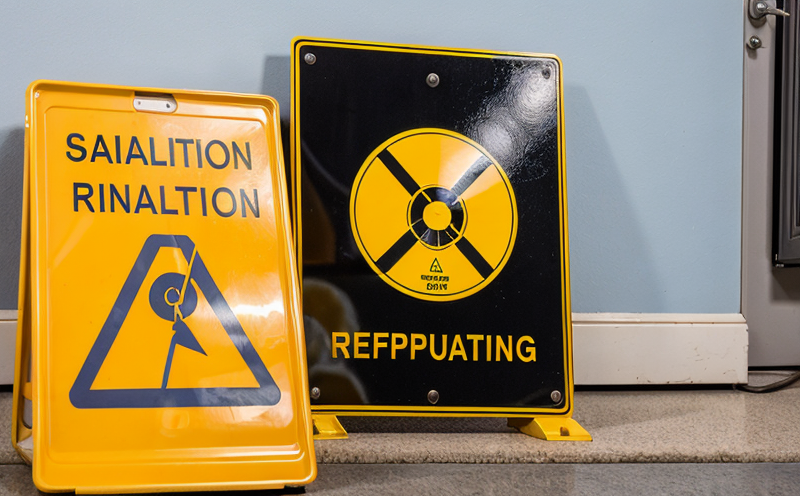ISO 11665-8 Radon Safety Compliance Testing in Buildings
The ISO 11665-8 standard provides comprehensive guidance on radon safety and compliance testing in buildings. This service is aimed at ensuring that structures are safe for occupancy by mitigating the risk of exposure to harmful levels of radon gas, a known carcinogen. Radon is an inert, colorless, odorless noble gas that can pose significant health risks if present in high concentrations inside enclosed spaces.
Radon originates from the natural decay of uranium and thorium found in soil and rock beneath buildings. It can seep through cracks in floors and walls, gaps around pipes and wires, and other openings into structures, accumulating indoors where it becomes more concentrated due to limited ventilation. Exposure over prolonged periods has been linked to lung cancer, particularly among non-smokers.
Implementing the ISO 11665-8 standard ensures that buildings comply with health and safety regulations set forth by organizations like the World Health Organization (WHO) and national governments. This service is crucial for facilities such as schools, hospitals, office complexes, and residential developments, ensuring occupant well-being.
The testing process involves several key steps: initial measurement using detectors to establish baseline radon levels, followed by installation of mitigation systems if high levels are detected. Regular monitoring is then conducted post-installation to verify effectiveness. Compliance with this standard not only protects health but also enhances the reputation and sustainability credentials of an organization.
For quality managers and compliance officers, adhering to ISO 11665-8 ensures that buildings meet stringent international safety standards. R&D engineers can leverage this service for innovative solutions in building design and materials selection. Procurement teams benefit from verified data on radon levels before committing resources to new projects.
The standard specifies detailed procedures for detecting and quantifying radon, including the use of charcoal-based passive detectors or continuous active monitors. Acceptance criteria are stringent, requiring results that fall below specified thresholds deemed safe for human habitation.
- Initial measurement should be conducted over a period of at least 90 days to ensure accurate data.
- Mitigation measures include sealing gaps, installing sub-slab depressurization systems, and enhancing ventilation.
- Regular monitoring must continue for at least two years after mitigation installation.
The testing process is meticulous, involving careful specimen preparation, precise instrumentation calibration, and rigorous quality control checks. Results are reported in a detailed manner, providing actionable insights for necessary corrective actions.
Incorporating ISO 11665-8 into your building safety protocols is not just about compliance; it’s an investment in the long-term health and well-being of occupants. By adopting this standard, you demonstrate a commitment to excellence and sustainability that resonates with stakeholders at all levels.
Eurolab Advantages
At Eurolab, we pride ourselves on delivering exceptional services tailored specifically for your needs. Our team of experts is well-versed in the latest international standards and practices related to radon safety testing.
- Global Expertise: We have a network of laboratories across Europe that adhere strictly to ISO 11665-8 guidelines, ensuring consistent quality.
- Comprehensive Services: From initial measurement to final reporting, we cover every stage of the process with precision and reliability.
- State-of-the-Art Technology: Utilizing advanced detection equipment ensures accurate and reliable results.
- Customer Support: Our dedicated team is always available to answer questions and provide support throughout your project lifecycle.
We understand the importance of accuracy and speed in radon safety testing. Our services are designed to meet tight deadlines without compromising on quality, ensuring that you receive timely results which can be acted upon promptly.
Our commitment to excellence is reflected not only in our technical capabilities but also in our customer-centric approach. We strive to build long-term relationships based on trust and reliability. Choose Eurolab for your ISO 11665-8 radon safety compliance testing needs, and experience the difference that expertise makes.
Why Choose This Test
- Regulatory Compliance: Ensures adherence to international health standards set by WHO and national regulations.
- Health Protection: Minimizes risks associated with radon exposure, safeguarding occupants’ well-being.
- Economic Benefits: Prevents costly remediation work and potential legal issues from non-compliance.
- Sustainability: Supports green building initiatives by promoting safer indoor environments.
- Reputation Enhancement: Demonstrates a commitment to safety, enhancing your organization’s reputation among stakeholders.
- Innovation Opportunities: Provides data for R&D teams to innovate in construction and materials selection.
The ISO 11665-8 radon safety compliance testing is more than just a regulatory requirement; it’s a proactive step towards creating safer, healthier living and working spaces. By choosing this service, you are investing in the future of your organization and its community.
Competitive Advantage and Market Impact
Implementing ISO 11665-8 radon safety compliance testing can provide significant competitive advantages. In a market where health and safety are increasingly becoming focal points, demonstrating commitment to these standards sets you apart from competitors.
Occupant trust is paramount in today’s business environment. By providing safe environments through rigorous adherence to international standards, you not only meet but exceed expectations. This can lead to higher employee satisfaction and productivity, which are crucial for maintaining competitive edge.
The demand for safer indoor environments continues to grow, driven by increased awareness of health risks associated with poor ventilation and elevated radon levels. Organizations that proactively address these issues will attract more tenants, clients, and employees, all of whom value a healthy work environment.
From an operational perspective, early detection through ISO 11665-8 compliance testing can prevent costly delays and expenses associated with remedial actions. It also reduces the risk of legal challenges from non-compliance, saving both time and resources.
In conclusion, embracing this standard is a strategic move that enhances your organization’s reputation while providing tangible benefits in terms of health protection and operational efficiency. The market impact cannot be overstated; those who lead in safety standards often find themselves leading the market as well.





